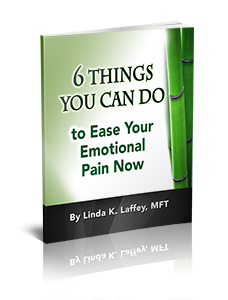Loving or remaining loyal to a person who continuously hurts you may seem backward.
Yet, this dynamic plays a large part in why many people stay with abusive partners. In fact, abusers depend on this kind of connection to keep you under their control.
It’s called a trauma bond.
Living your best life means living in reality as much as you can. This is also the first step in recognizing and recovering from trauma bonding. Let’s explore this dangerous phenomenon.
Understanding a Trauma Bond
In short, trauma bonding is the dedication to a person who is toxic or destructive.
Though these bonds most commonly occur in intimate relationships, such as married or co-habitating couples, trauma bonding can happen in any type of relationship.
Those in relationships with alcoholics or addicts are most at risk, mostly because of the scattershot nature of positive reinforcement.
Otherwise known as inconsistent reinforcement, trauma bonds are birthed from a series of broken promises. The situations and actions involved are usually intense, complicated, and intermittent. Particularly in dysfunctional relationships, there are usually “normal” phases, and phases filled with high emotion.
Unsurprisingly, trauma bonding manifests in patterns, establishing the poisonous connection inch by inch.
How to Recognize a Trauma Bond
Of course, you can learn about trauma bonds. Yet, it is shining a revealing light on your own reality that proves the strongest way to prevent them from going unchallenged.
To reveal whether a trauma bond exists in your own relationship, consider the following indicators:
1. Look for a pattern of broken promises. Does the other person consistently make promises that they don’t keep? Measure their words against their actions to unveil the pattern.
2. Others are appalled at how they treat you. Although you may be numb to certain abusive behaviors, take note of how others react to your situation. Consider this information useful.
3. You feel stuck or attached to the other person. Even if you no longer trust them or even like them, you find it difficult to cut ties. You may have given up hope, feeling like you have no power to change anything.
4. The damaging fights continue. No matter how many times you argue or disagree, there’s no resolution. With each round, you may sink a little lower into despair and hopelessness.
5. You can’t seem to cut ties. Even if you’ve attempted to leave the relationship, you may find yourself in excruciating pain, missing the other person too badly. Eventually, you establish the relationship.
How to Recover from a Trauma Bond
Take heart. Knowing, healing and recovering from a trauma bond is within reach.
As mentioned before, shining a revealing light on your life is the first step toward recovery. Abuse is often stealthy. So, even when you’re being abused, you may not realize it. Or you may not want to admit that it is what it is—until the light shines.
After acknowledging the signs of trauma bonding, it’s vital to detox your entire being from the negativity. Sometimes this means going “no-contact” with the toxic person.
Keep in mind, the pain of missing that person may feel a lot like withdrawal. During this time, finding support in friends, family, your therapist, or a support group is paramount.
Furthermore, learn how to manage those anxious feelings by practicing deep breathing, visualization, muscle relaxation techniques, or even adopting a mantra. Talk to your therapist about therapy techniques like EMDR for possible relief.
Lastly, love yourself and show yourself kindness. Get the sleep you need. Eat a nutritious diet and take care of yourself. After all, you are rescuing yourself. Now nurse yourself back to health.
Take the first step…
If you believe yourself to be impacted by trauma bonding, and you’re ready to take the next step in resolving those issues, I would like to help. Please contact me via phone or email so we can discuss how we might work together to achieve your therapeutic goals as quickly and effectively as possible.
I look forward to hearing from you.
Linda K. Laffey, MFT


